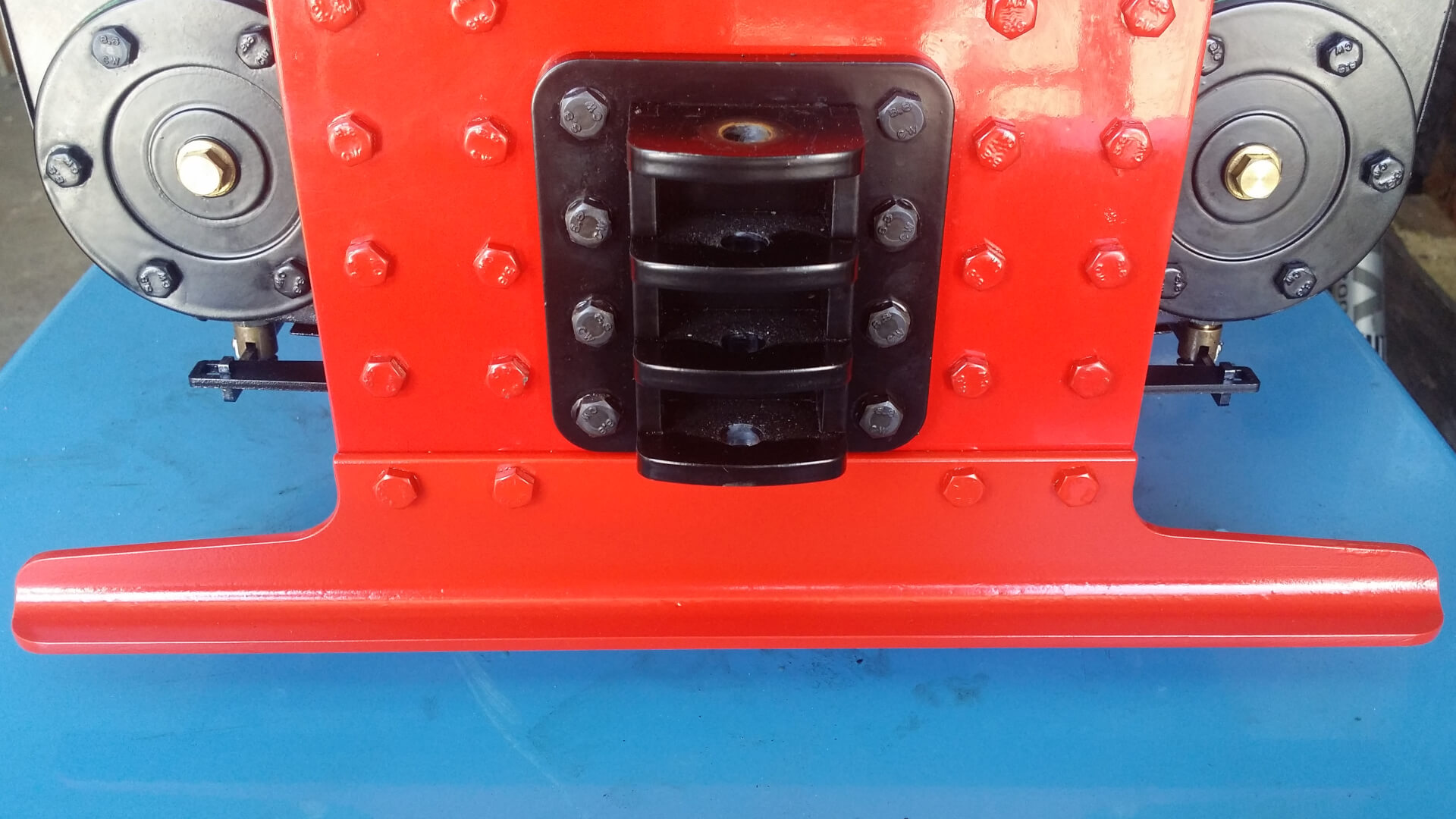After I’d seen pictures of other Feldbahns on the internet with having derailing bars attached to them, I thought to myself it might be wise to have one too.
I figured the most vulnerable parts must be the cylinder drain cocks because they were pretty much the lowest – and additionally – one of the more ‘fragile’ parts on the loco. So in case of a derailment, it would be very likely that they would be damaged. This also meant that the derailing bar had to come down pretty low to serve its purpose.
Some measurements were taken and after a CADing session, I had a plan that could be put into action. Conveniently, the bar could be cut out of some stock material – to be more precise: a 50x50x4 mm L-Profile, 380 mm long.
After I bit the shape out of the steel and applied a coat of red paint, the result looked like the thing had always been on there – mission accomplished.
The clearance from the top of the track to the bottom of the derailing bar ended up being like something between 20-24 mm. This should be plenty to hover safely over the track while being there to take the full weight of the engine when leaving the tracks unintentionally.

I had some trouble projecting the fixing holes from the engine’s frame to the part precisely, and ended up with two of them slightly being off-centre. Using one drill size larger on them quickly fixed the problem and the screws slid through seamlessly. So if you’re planning to build one yourself, by using the drawing attached at the end of this article, be aware that you have to figure out the exact horizontal alignment of the four holes yourselves. I would be very grateful if you could let me know the exact measurements after figuring them out, so that I can at least update them in the drawing. Just send me an email to the ‘info’ address of this domain (feldbahn-journal.net).
Downloads
- Feldbahn Derailing Bar (*.pdf)
